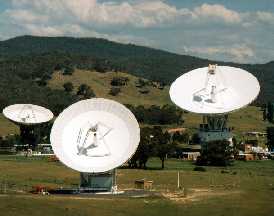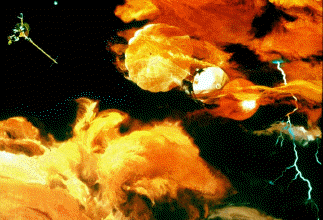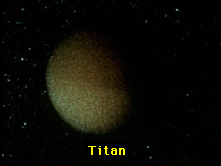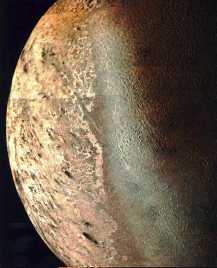This is an image of Triton.
Click on image for full size
NASA
Life on Triton?
Triton is most like Jupiter's moon Europa. Like Europa, the interior of Triton may have been warm enough at one time to contain a liquid layer just under the surface. On Earth, we know that there are some creatures which can survive in an environment of very cold water, such as under the ice of the north pole.
It is very cold on Triton, about -300 degrees. There is almost no atmosphere, but what there is is like Saturn's moon Titan because there is Nitrogen. Nitrogen is one of the waste products left behind by life forms.
Unfortunately Triton is inside the magnetosphere of Neptune, which is very harmful to life.
Overall, the environment sounds unfriendly to life as we know it on earth, because of the magnetosphere and the cold. However, if the interior is warm enough, and if the conditions are just right, there may be living creatures on Triton under the icy surface.
You might also be interested in:

The diagram to the left shows the possible interior of Europa. The composition of the icy moons is mostly ice, therefore there is probably a small core of rocky material buried inside, covered with ice.
...more
Some animals can live without light or oxygen. Some can live in very cold places or very hot ones. Some live underwater, while others live on land. All animals are different and need different things
...more
Most forms of life leave behind signs that they are there. Plants help make oxygen and some creatures help make nitrogen. People leave behind smog, television signals, and garbage. Scientists find life
...more
Jupiter's atmospheric environment is one of powerful winds, going 250 miles per hour, and temperatures from -270 degrees to +32 degrees (freezing temperature). These winds make it hard for life forms to
...more
In July, 1996 a team of scientists said that they had discovered possible fossils of bacteria in a meteorite named ALH84001 that came from Mars. It was found in Antarctica in 1984 after having landed there
...more
Saturn's atmospheric environment is one of powerful winds, going 250 miles per hour, and temperatures from -270 degrees to +80 degrees. With winds like these, it is hard to have peace and quiet. The region
...more
The air of Titan is a lot like the Earth's, except that it is very cold, from -330 degrees to -290 degrees! Like the Earth, there is a lot of Nitrogen and other complex molecules. There also may be an
...more















